program description
The Shore Stations Program collects and provides access to current and historical daily sea surface temperature (SST) and salinity (SSS) measurements observed at shoreline locations along the west coast of the United States. Historically, stations ranged from the southernmost point at La Jolla, CA, to the northernmost point on the west coast, Neah Bay, WA, located at the entrance to the Straits of Juan de Fuca. Currently, this research is funded by California Department of Parks and Recreation, Natural Resources Division, Award# C1670003.
Currently, all 10 active stations are located in California. Data values are processed and published on the website by program staff at UCSD/Scripps Institution of Oceanography as they become available from each site. Program data are archived on a quarterly basis in the UCSD Library’s Digital Collections. https://doi.org/10.6075/J0S75GHD
This program ranks as one of the world’s longest, continuous ocean time series and the longest on the Pacific Rim. Measurements at La Jolla began in August 1916, with several other stations dating to the 1920’s. These long time series are essential for identifying coastal ocean warming over the past century and determining its role in intensifying marine heat waves, as well as characterizing fluctuations in warming and cooling from seasonal to multi-decadal time scales. This growing data bank provides us with one of the first opportunities to separate natural from anthropogenic changes in our coastal zone.
These warm and cold anomalies, and the long-term warming trend have significant biological effects on plankton production, fish catch, and seabirds, among many other impacts. They also are associated with changes in sea level, wave heights, and beach erosion, and have recently been linked to climate fluctuations over the southwestern U.S.
Field Methods
Surface Measurements
Near-bottom Measurements (Scripps Pier only, depth approx. 5m)
A Niskin bottle is used for the collection of bottom water at the Scripps Pier location only. The Niskin bottle is lowered to the bottom and raised 1 meter off the bottom. A messenger is sent down the line to trip the bottle and collect the sample at depth. Once back at the surface, a digital thermometer is immediately immersed in the Niskin bottle and the temperature is measured to the nearest 0.01ºC. Temperature measurements are rounded and reported to 0.1ºC. Seawater is drained from the Niskin bottle into glass bottles with air tight seals, after rinsing the bottle 3x with sample water. Earlier bottom samples were collected with Nansen bottles and reversing thermometers.
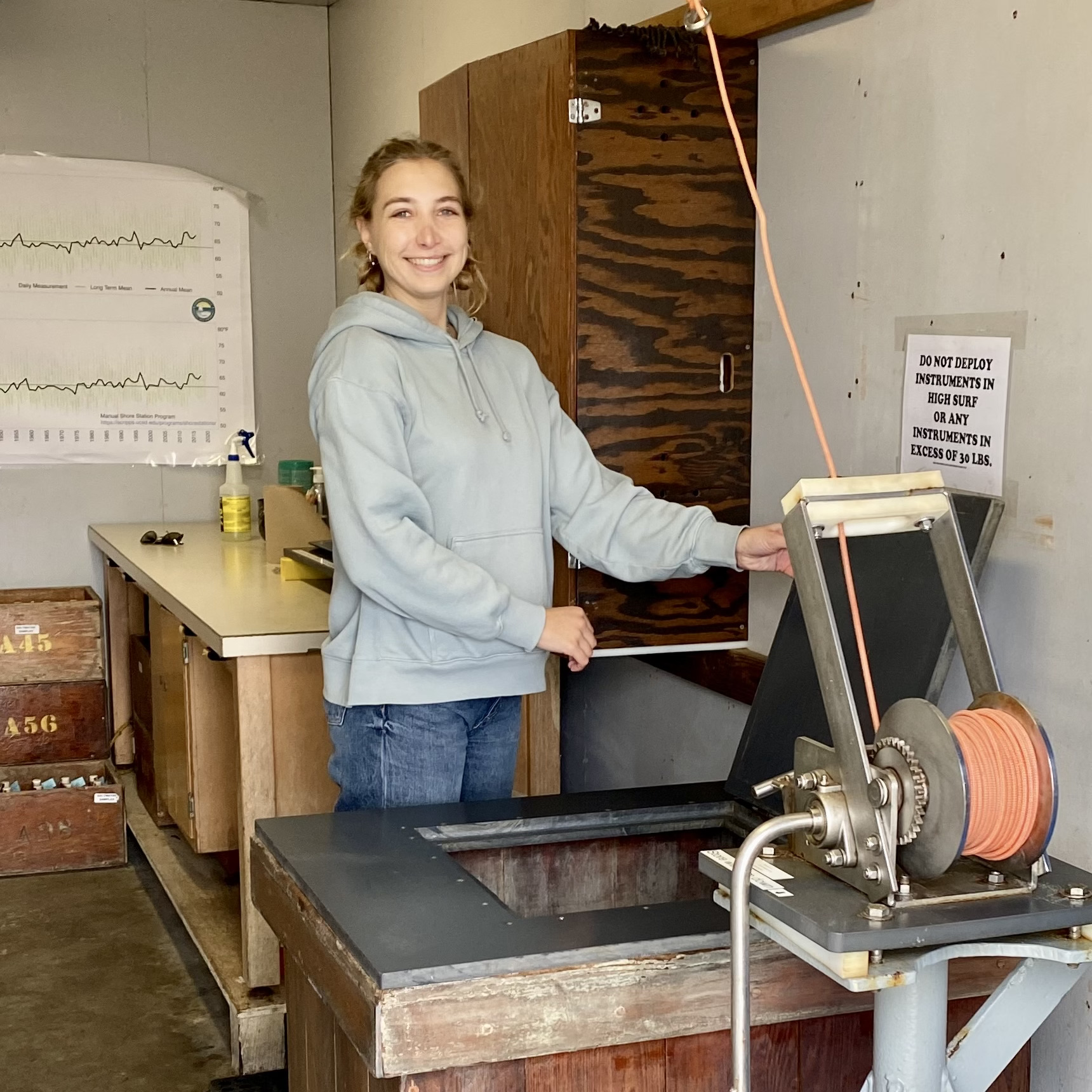
Scripps Pier Sampling Well 2022
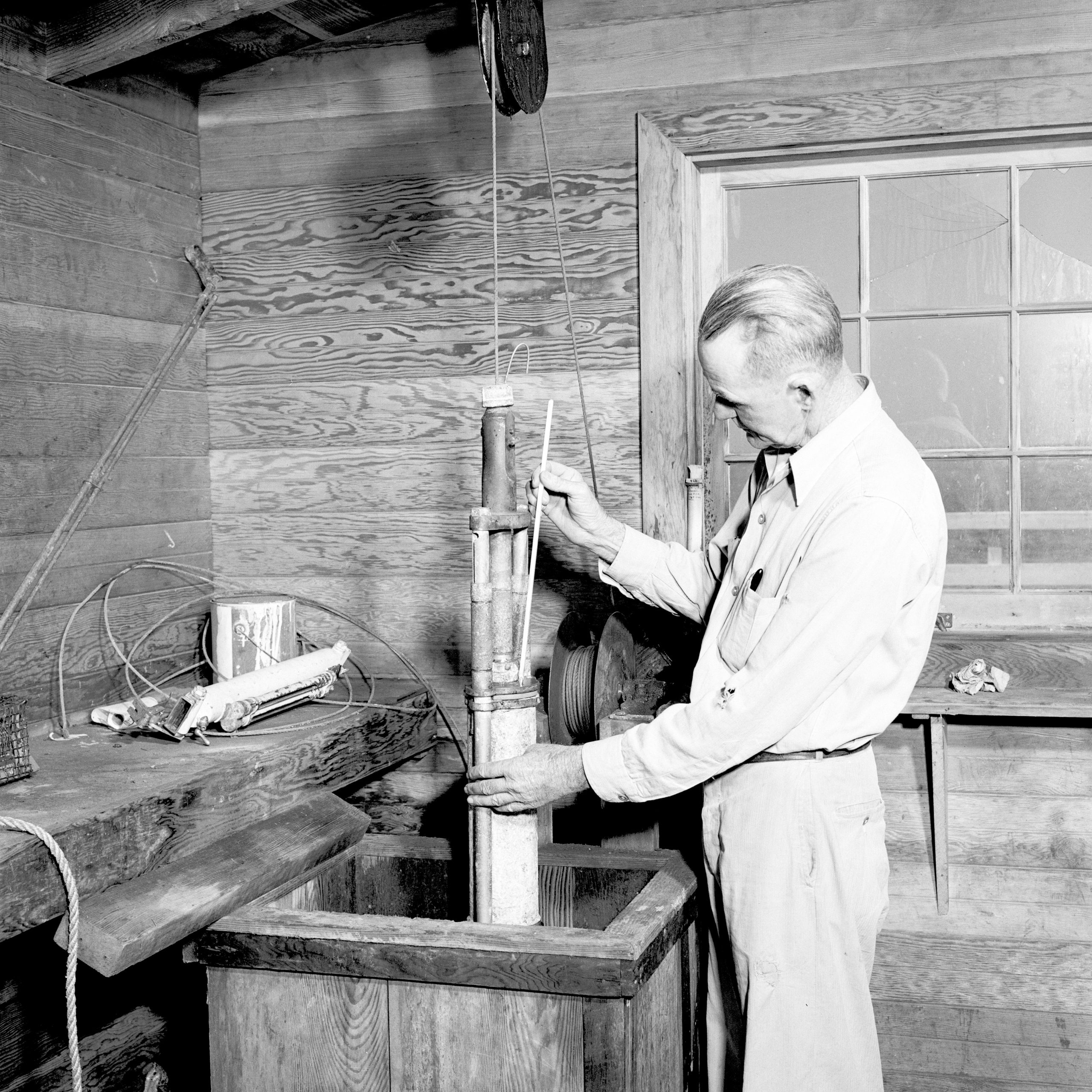
Scripps Pier Sampling Well 1949 (Claude W. Palmer)
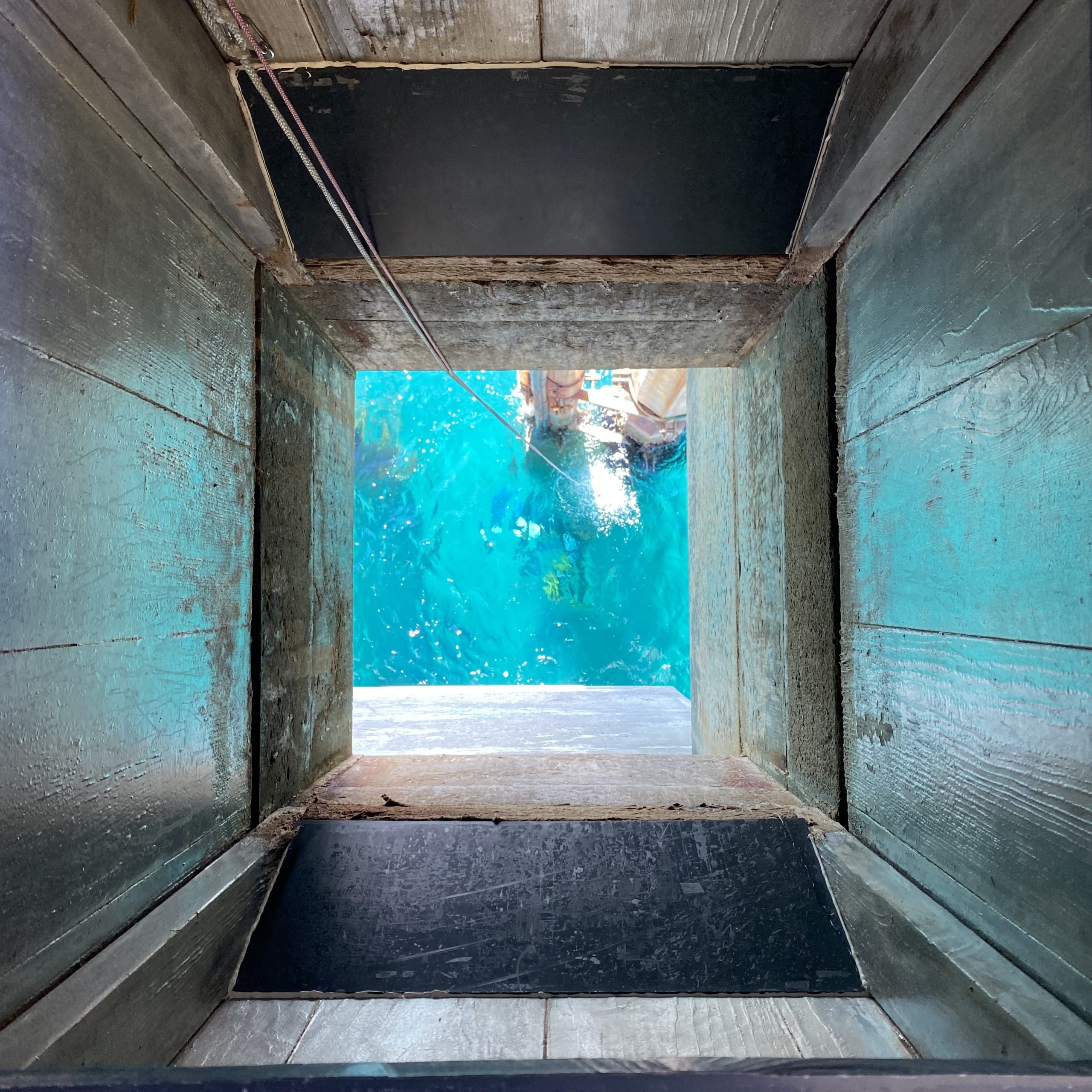
View down the Well at Scripps Pier (2022)

Glass bottles to collect seawater for salinity measurements
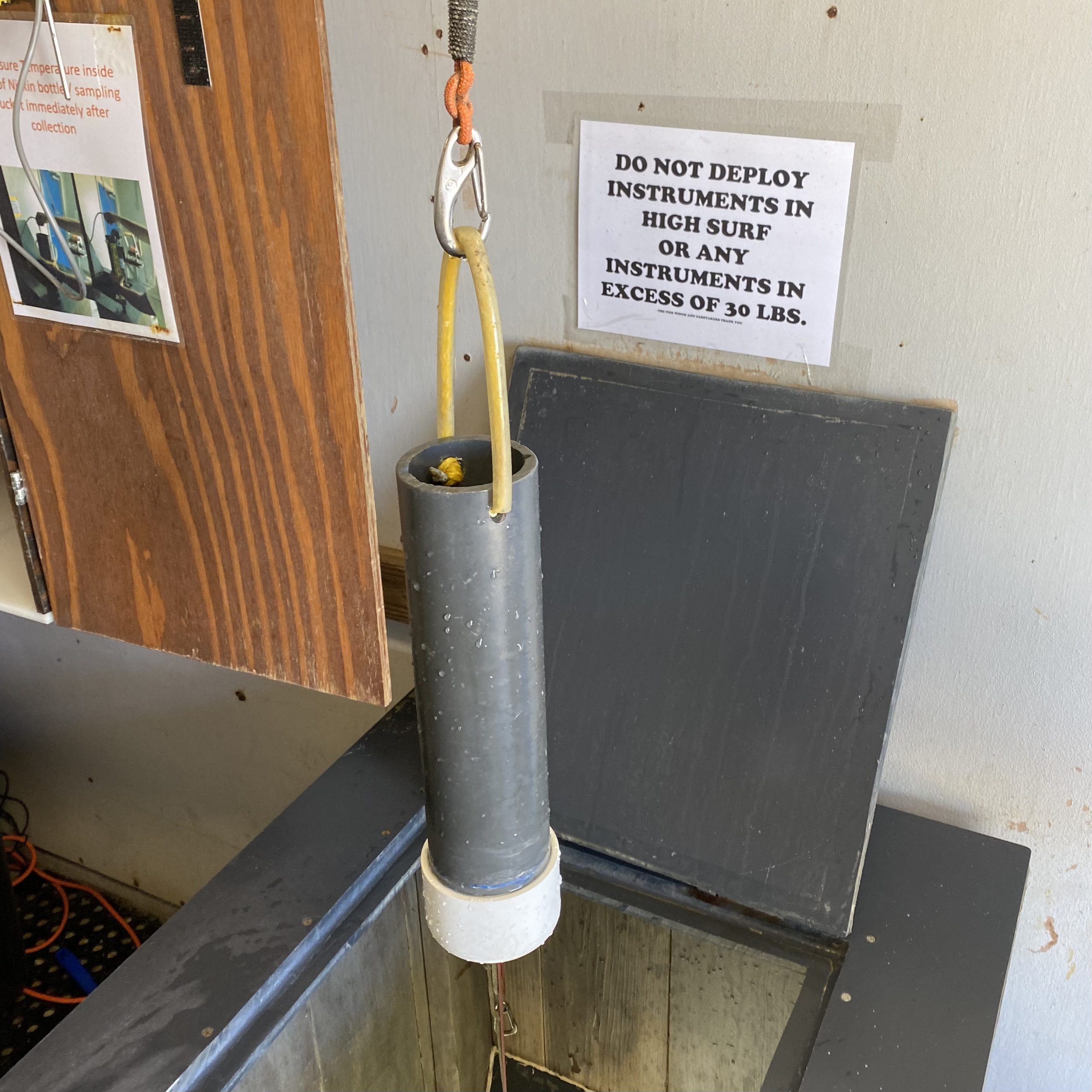
Surface sampling bucket
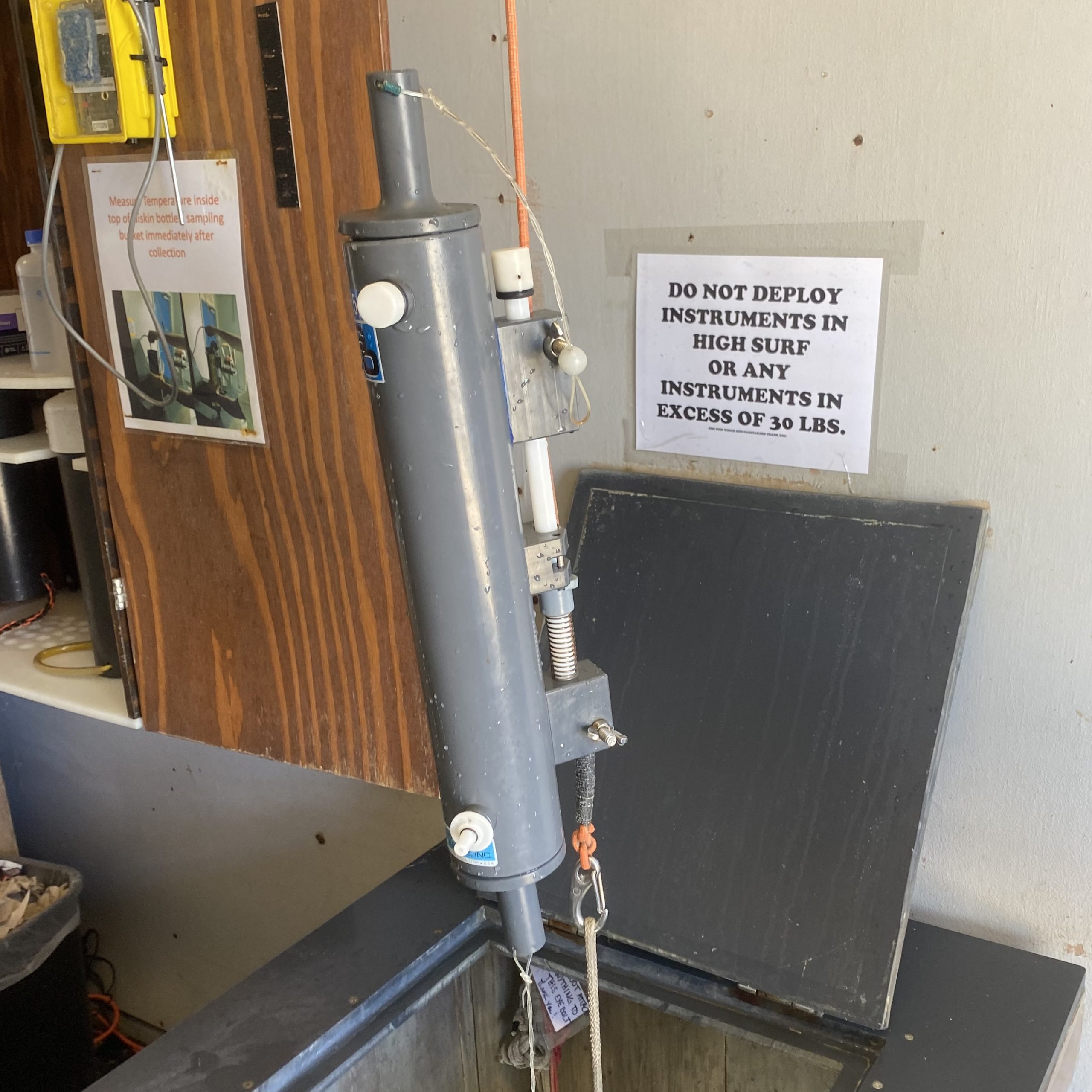
Niskin bottle (for bottom sampling)
Instrumentation
Temperature
1916 - early 1950’s
1950’s - 2008
2008 - present
In December 2008 the program switched to calibrated digital thermometers because mercury was banned in the state of California. These digital thermometers were custom made by Douglas Alden, and engineer at Scripps Institution of Oceanography. The thermometers read in hundredths of a degree Celsius (0.01°C) and measurements are rounded to the nearest tenth of a degree (0.1°C). Calibrations are performed on a 9 month to yearly basis at the Ocean Data Facility, Calibration Laboratory at SIO with two referenced thermometers.
Salinity
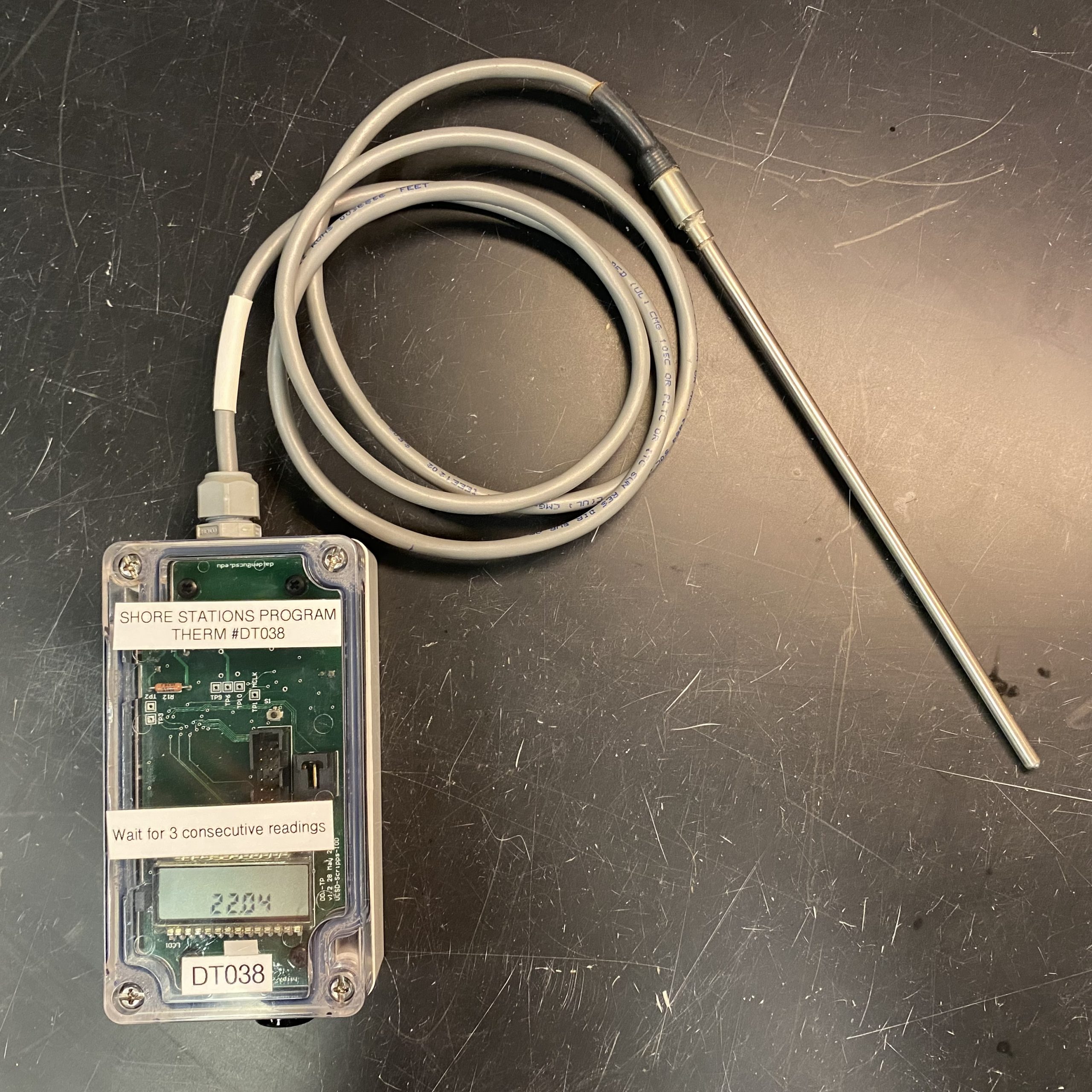
Digital Thermometer

Inductive Salinometer

